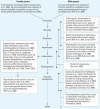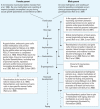Environmental exposures and gene regulation in disease etiology
- PMID: 17805414
- PMCID: PMC1964917
- DOI: 10.1289/ehp.9951
Environmental exposures and gene regulation in disease etiology
Abstract
Objective: Health or disease is shaped for all individuals by interactions between their genes and environment. Exactly how the environment changes gene expression and how this can lead to disease are being explored in a fruitful new approach to environmental health research, representative studies of which are reviewed here.
Data sources: We searched Web of Science and references of relevant publications to understand the diversity of gene regulatory mechanisms affected by environmental exposures with disease implications.
Data synthesis: Pharmaceuticals, pesticides, air pollutants, industrial chemicals, heavy metals, hormones, nutrition, and behavior can change gene expression through a broad array of gene regulatory mechanisms. Mechanisms include regulation of gene translocation, histone modifications, DNA methylation, DNA repair, transcription, RNA stability, alternative RNA splicing, protein degradation, gene copy number, and transposon activation. Furthermore, chemically induced changes in gene regulation are associated with serious and complex human diseases, including cancer, diabetes and obesity, infertility, respiratory diseases, allergies, and neurodegenerative disorders such as Parkinson and Alzheimer diseases. One of the best-studied areas of gene regulation is epigenetics, especially DNA methylation. Our examples of environmentally induced changes in DNA methylation are presented in the context of early development, when methylation patterns are initially laid down. This approach highlights the potential role for altered DNA methylation in fetal origins of adult disease and inheritance of acquired genetic change.
Conclusions: The reviewed studies indicate that genetic predisposition for disease is best predicted in the context of environmental exposures. Second, the genetic mechanisms investigated in these studies offer new avenues for risk assessment research. Finally, we are likely to witness dramatic improvements in human health, and reductions in medical costs, if environmental pollution is decreased.
Keywords: DNA methylation; chemicals; disease risk; drug resistance; endocrine disruption; environment; fetal origins of adult disease; gene expression; gene regulation; susceptibility.
Figures


References
-
- Baccarelli A, Hirt C, Pesatori AC, Consonni D, Patterson DG, Bertazzi PA, Dolken G, Landi MT. t(14;18) translocations in lymphocytes of healthy dioxin-exposed individuals from Seveso, Italy. Carcinogenesis. 2006;27(10):2001–2007. - PubMed
-
- Bao BY, Yeh SD, Lee YF. 1 α,25-dihydroxyvitamin D-3 inhibits prostate cancer cell invasion via modulation of selective proteases. Carcinogenesis. 2006;27(1):32–42. - PubMed
Publication types
MeSH terms
Substances
LinkOut - more resources
Full Text Sources

